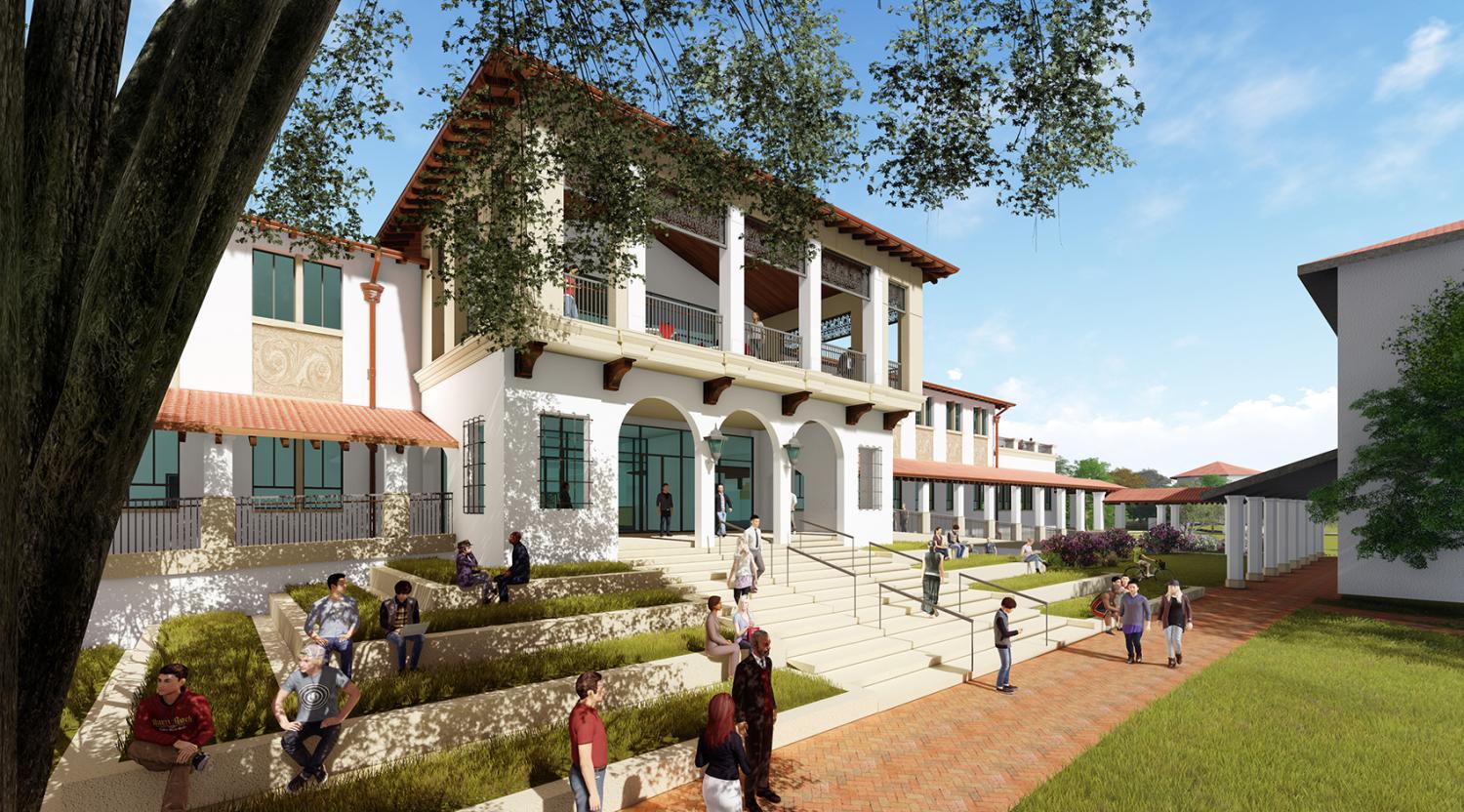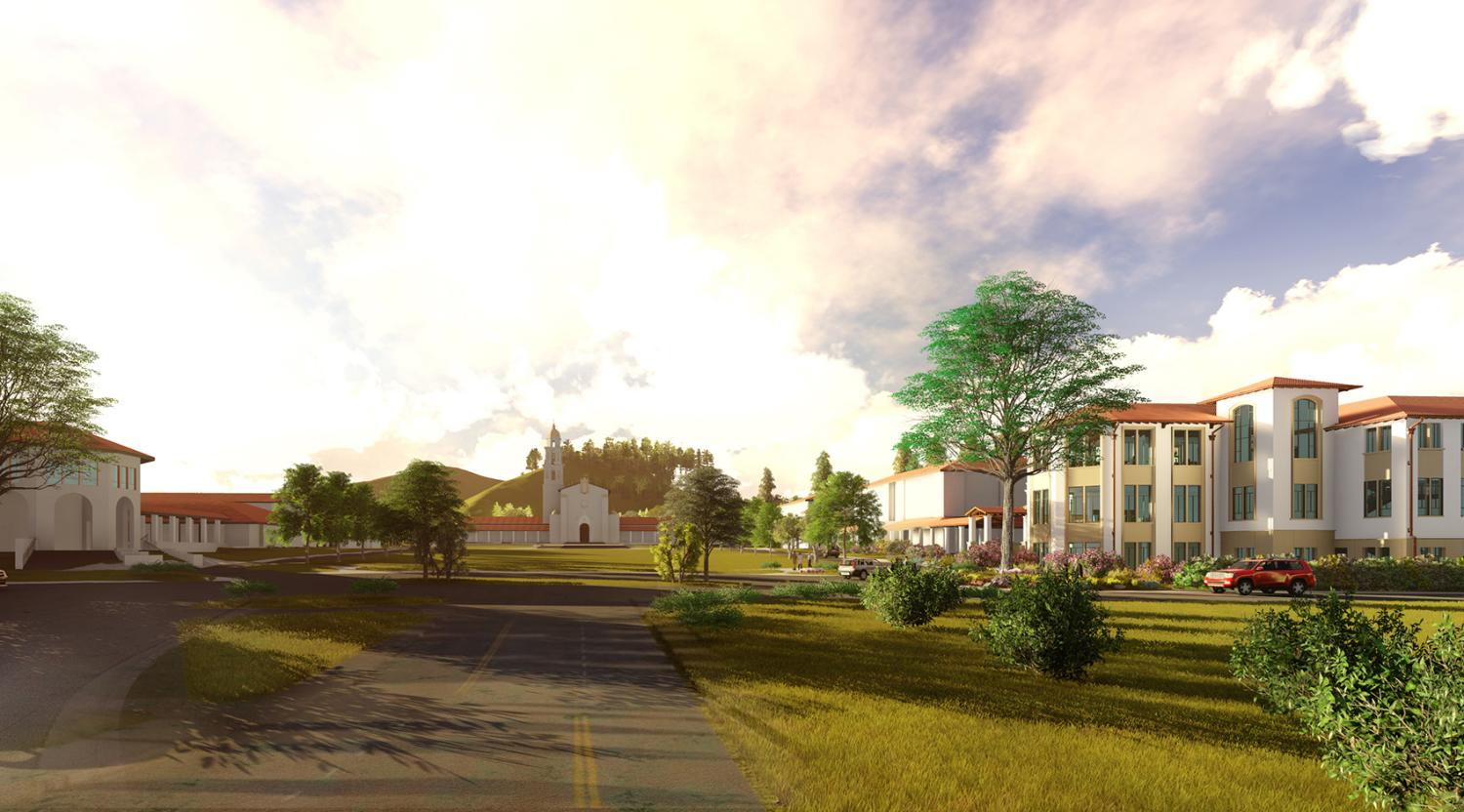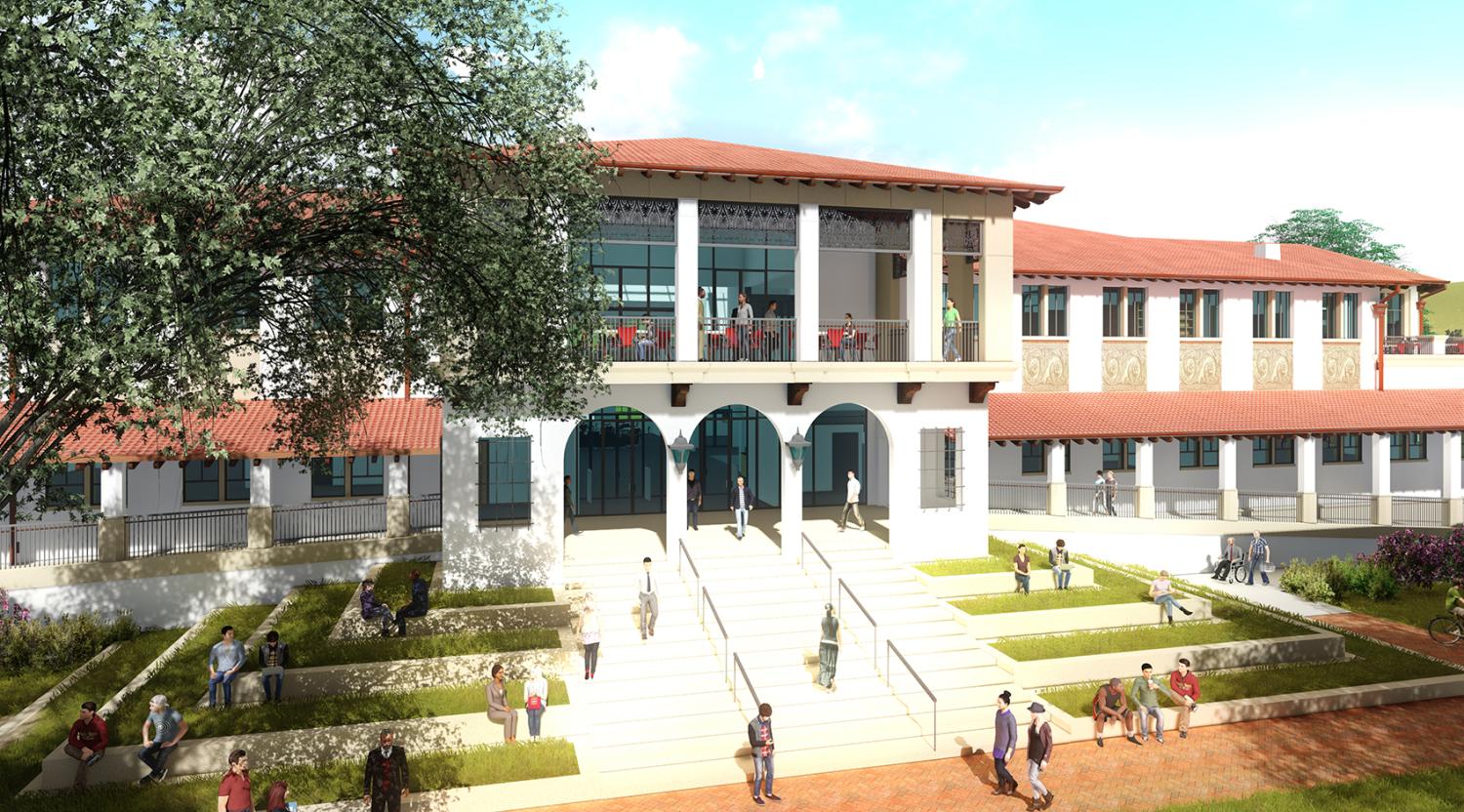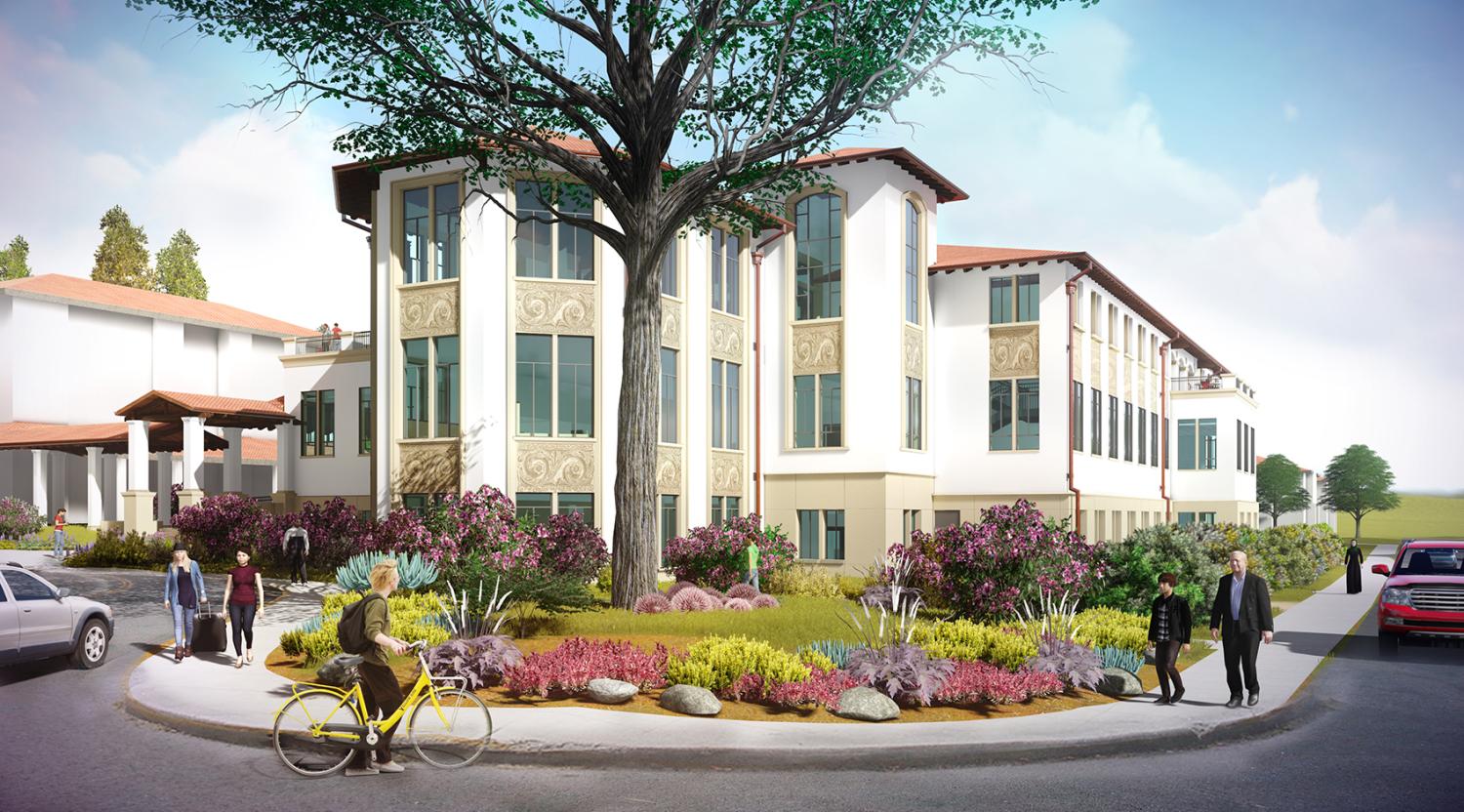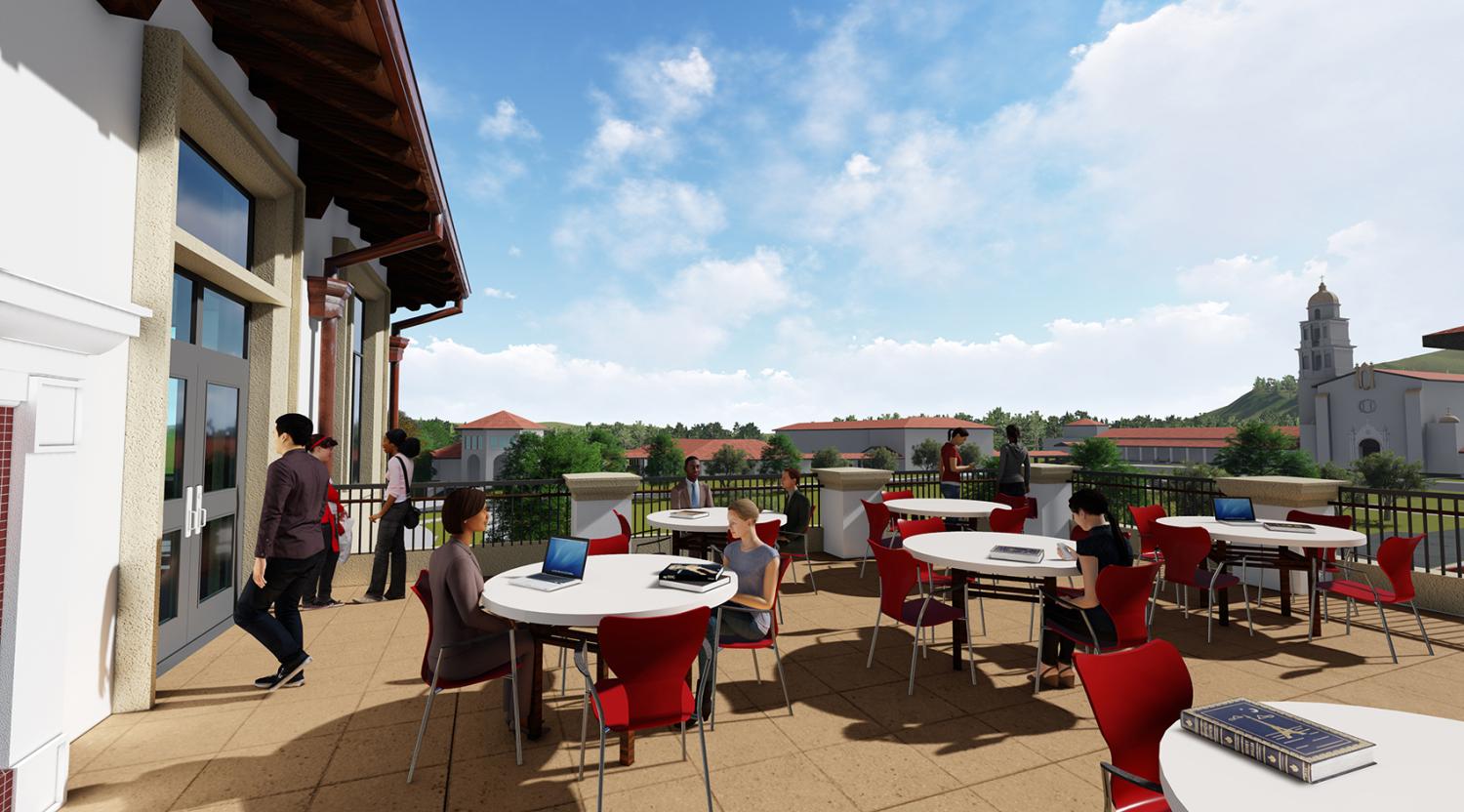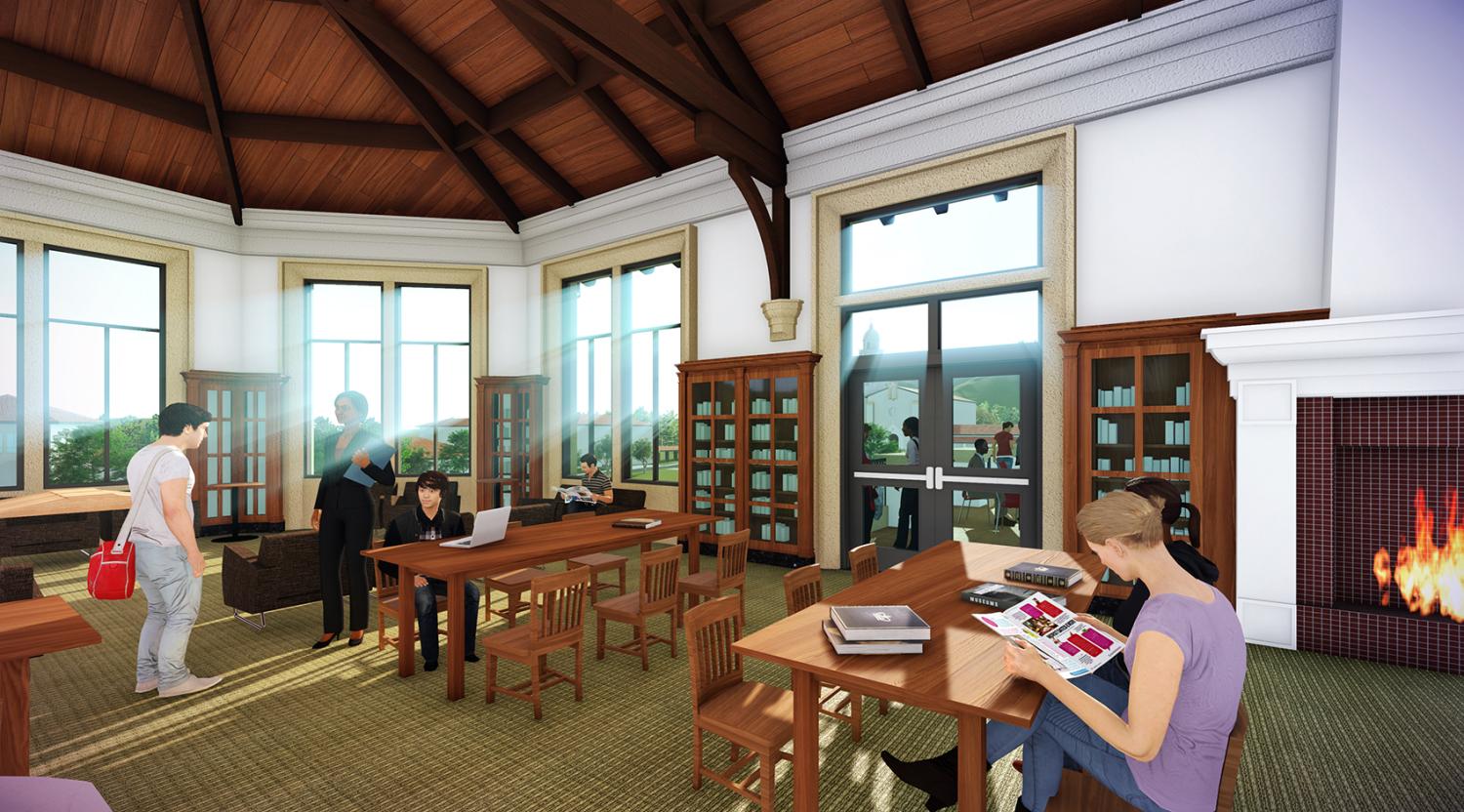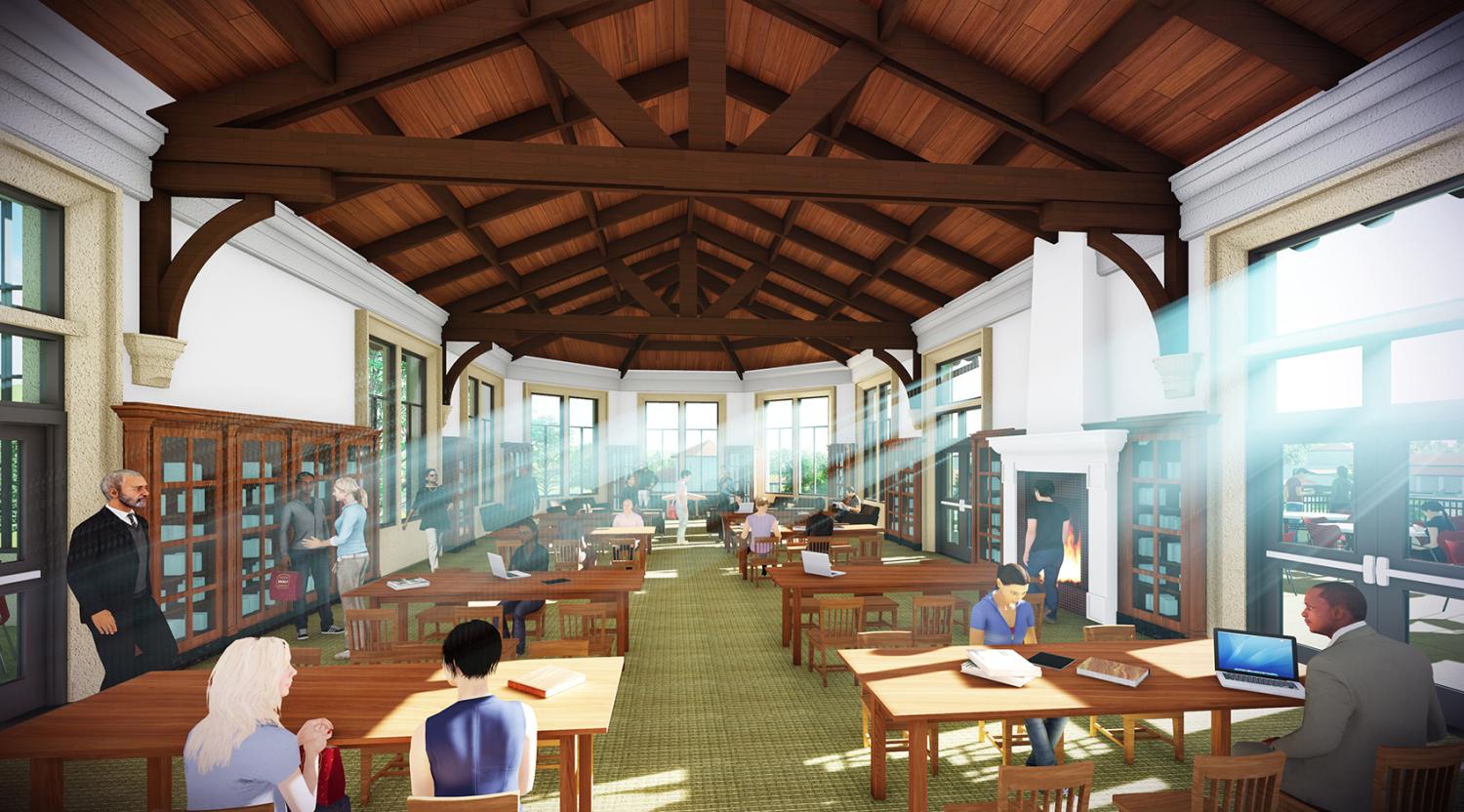Noll & Tam has a long-standing relationship with Saint Mary’s College of California and has worked with them explore options for renovating or reconstructing their campus library. The result is a compelling design vision and realistic project budget with funding and capital campaign goals. The new design moves the library westward, greeting visitors and staff near the entry of the campus, and offering a variety of learning and studying environments for undergraduate and graduate scholars.
Moraga, CA
Location
65,000 SF
Size
$30M
Project Cost
In Progress
Status
Thornton Tomasetti, Inc.
Structural
Interface Engineering
Mechanical/Electrical/Plumbing
Schell & Martin, Inc.
Civil
Charles M Salter Associates
Telecom/AV/Security
BMR Construction Management
Cost Estimating

Moraga, CA
Location
65,000 SF
Size
$30M
Project Cost
In Progress
Status
Thornton Tomasetti, Inc.
Structural
Interface Engineering
Mechanical/Electrical/Plumbing
Schell & Martin, Inc.
Civil
Charles M Salter Associates
Telecom/AV/Security
BMR Construction Management
Cost Estimating
Noll & Tam has a long-standing relationship with Saint Mary’s College of California and has worked with them explore options for renovating or reconstructing their campus library. The result is a compelling design vision and realistic project budget with funding and capital campaign goals. The new design moves the library westward, greeting visitors and staff near the entry of the campus, and offering a variety of learning and studying environments for undergraduate and graduate scholars.




